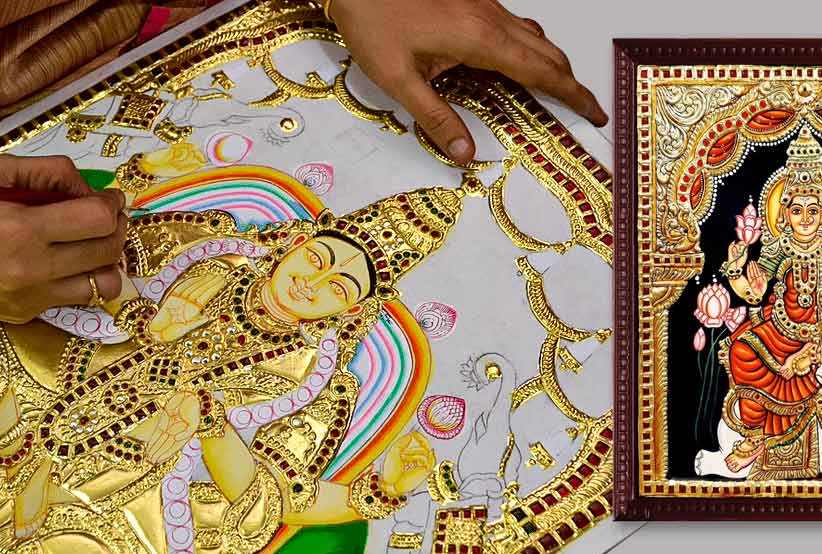
Art has the unique ability to encapsulate the essence of culture, reflecting the intricate patterns of life within a society. Tanjore paintings, originating from the ancient Tamil Nadu region in Southern India, stand as a testament to the dynamic nature of culture, capturing the influences of time and migration on artistic expressions. In this exploration, we delve into the historical roots, cultural significance, and the timeless allure of Tanjore paintings.
Historical Roots:
Ancient Tamil Nadu, comprising the Chera, Chola, and Pandya kingdoms, witnessed a flourishing cultural exchange. The Chola kingdom, with its capital at Thanjavur, played a pivotal role in shaping the artistic landscape of the region. The name “Thanjavur” itself translates to “a place of refuge” in Tamil, highlighting its historical and mythological significance. During the reign of Rajaraja Cholan, sculptors and painters from Andhra Pradesh migrated to Tanjore, introducing Vaishnavite elements to the local art scene.
Artists and Communities:
The painters of Tanjore primarily hailed from Telugu-speaking communities, notably the Rajus in Thanjavur and Trichy, and the Nayudus in Madurai. These communities migrated to Tanjore and Madurai after the decline of the Vijayanagar Empire in search of patronage. Early references, such as F.R. Hemingray’s report in 1906, praised the skills of the Tanjore painting artists, highlighting their proficiency in painting on wooden tablets or smooth cloth with meticulous attention to detail.
Training and Hereditary Art:
Tanjore painting was often a hereditary art form, passed down through generations within families. Training involved a combination of tradition and innovation, spanning a period of three years. The first year focused on freehand designs, including Godheads, mudras, and various intricate elements. Subsequent years delved into pencil drawings, brush practice, and the application of color shades. The traditional method of teaching ensured a seamless transfer of skills from experienced elders to the younger generation.
Timelessness in Tanjore Paintings:
Tanjore paintings are inherently linked to Hinduism, drawing inspiration from religious texts, puranas, and epics. The central themes revolve around gods and goddesses, depicting scenes from mythology. The art form has evolved over time, and contemporary Tanjore paintings now feature a diverse range of themes, including depictions of Hindu deities, Jesus, Mother Mary, as well as intricate portrayals of jewels and musical instruments.
Contemporary Tanjore Paintings:
Modern Tanjore paintings are crafted on wooden boards, often adorned with 22-carat gold foil and embellished with semi-precious stones. The subjects range from traditional Hindu gods and goddesses to Christian figures, reflecting the adaptability of this ancient art form. Timeless Tanjore, a contemporary practitioner, emphasizes the use of high-quality materials, including water-proof, termite-proof wooden bases, authentic Jaipur gemstones, and original 24-carat gold foil.
Tanjore paintings continue to embody the rich cultural heritage of Southern India, seamlessly blending tradition with contemporary expressions. The art form’s timeless charm lies in its ability to transcend temporal boundaries, reflecting and shaping the cultural moments it encapsulates. As practitioners like Timeless Tanjore strive to keep this tradition alive, the allure of Tanjore paintings remains, inviting viewers into a world where art becomes a timeless journey through history and devotion.
